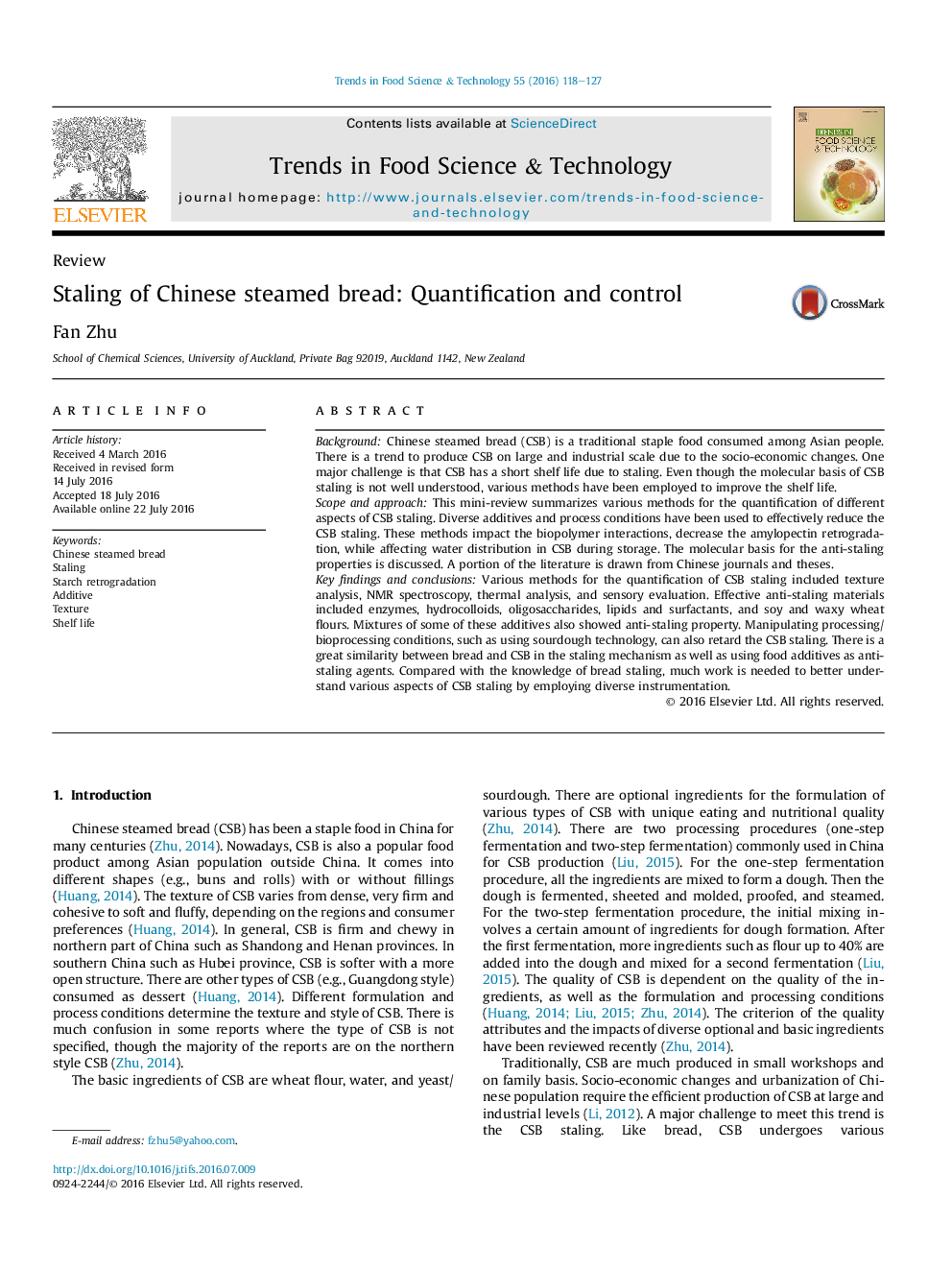| Article ID | Journal | Published Year | Pages | File Type |
|---|---|---|---|---|
| 2098484 | Trends in Food Science & Technology | 2016 | 10 Pages |
•Quantification methods of steamed bread staling are reviewed.•Diverse food additives effectively reduced steamed bread staling.•Suitable processing and bioprocessing reduced steamed bread staling.•Strategies to reduce steamed bread staling are suggested.
BackgroundChinese steamed bread (CSB) is a traditional staple food consumed among Asian people. There is a trend to produce CSB on large and industrial scale due to the socio-economic changes. One major challenge is that CSB has a short shelf life due to staling. Even though the molecular basis of CSB staling is not well understood, various methods have been employed to improve the shelf life.Scope and approachThis mini-review summarizes various methods for the quantification of different aspects of CSB staling. Diverse additives and process conditions have been used to effectively reduce the CSB staling. These methods impact the biopolymer interactions, decrease the amylopectin retrogradation, while affecting water distribution in CSB during storage. The molecular basis for the anti-staling properties is discussed. A portion of the literature is drawn from Chinese journals and theses.Key findings and conclusionsVarious methods for the quantification of CSB staling included texture analysis, NMR spectroscopy, thermal analysis, and sensory evaluation. Effective anti-staling materials included enzymes, hydrocolloids, oligosaccharides, lipids and surfactants, and soy and waxy wheat flours. Mixtures of some of these additives also showed anti-staling property. Manipulating processing/bioprocessing conditions, such as using sourdough technology, can also retard the CSB staling. There is a great similarity between bread and CSB in the staling mechanism as well as using food additives as anti-staling agents. Compared with the knowledge of bread staling, much work is needed to better understand various aspects of CSB staling by employing diverse instrumentation.
